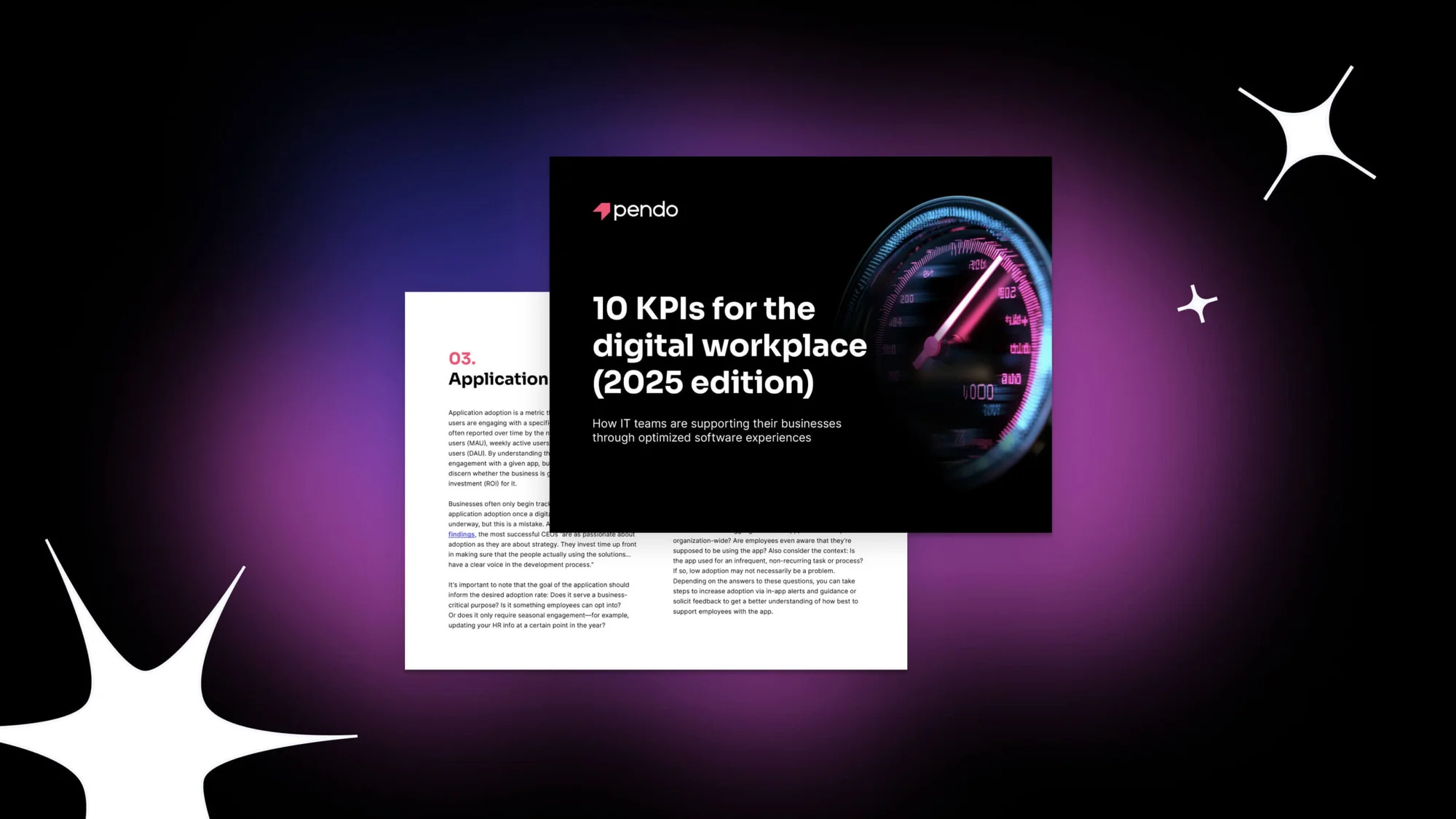It’s no secret that change is difficult. Adding features to or changing functionality in a digital tool means taking users out of a process that they’re familiar with and that’s naturally going to be met with some resistance.
Improving feature adoption is all about smoothing out that process and making change as easy and frustration-free as possible. To do that, you need to understand how your product is being used and which behaviors lead users to find success and value, so they stick around and become lifelong customers.
Pendo offers an end-to-end solution for doing just that, whether you’ve built or bought your software. Adam Goings, a senior sales engineer here at Pendo, walked us through how it’s done in a recent webinar.
Establish a baseline of usage
You can’t develop successful strategies for improving feature adoption if you don’t know how your platform is being used. Pendo’s product analytics reveal the most and least used functionality in your platform, and the paths users take through it as they complete work.
Pendo tracks everything retroactively from the day it’s installed, so you don’t need to spend time tagging each page and feature to get a holistic view of activity in your software. All of that data will act as fuel for the next steps, setting goals and using in-app guidance to drive adoption.
Setting goals
Once your feature launches and you have an idea of what success will look like from an adoption perspective, you can set Goals in Pendo to track your progress. Goals can be ongoing or time bound, and based on a variety of metrics like daily, weekly, or monthly average users.
Then, you can create dashboards to get an at-a-glance look at how things are going, or examine the data more deeply by slicing it into segments and visualizing it in Data Explorer.
Using in-app guides
Now that you’ve got some insight into how your product is being used and whether users are discovering your new feature, it’s time to start actively leading users to it and showing them its full value. We’ll do this with in-app guides.
Say you want to lead users who haven’t found the feature to do so. To achieve this, segment your data to include only users that haven’t interacted with the feature. Then, set up a dashboard with the goal you created to monitor your progress.
Next, create an in-app guide targeted to your segment to inform them that the feature is available and show them where to find it. Once they’ve engaged the feature, more guides can be used to create a multi-step walkthrough to help them learn to use it.
This approach is not a one-and-done sort of strategy. Your initial messaging might not work, so keep iterating until those adoption metrics start trending up. Guides metrics work just like product analytics to show you how impactful your guides have been. Change up your guide copy, run A/B tests, or further refine your segmentation to improve them.
Make it sticky
Once users have started interacting with your feature, you’ll want to make sure they keep using it. Pendo’s analytics can show you which users are continuously returning to the feature and in-app surveys can help you find out why, then you can use that information to encourage other users to mimic their behavior with additional in-app guidance.
Watch the full webinar:




